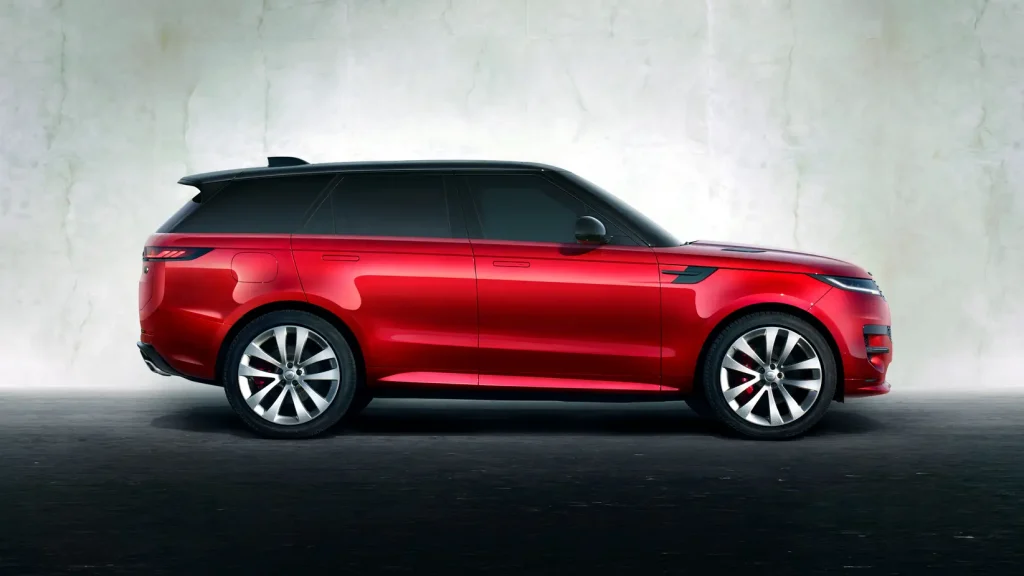
This is the brand new Range Rover Sport

So then, following on from the big reveal of the fifth-generation Range Rover last year, we now have the Mk3 Range Rover Sport to go with it. You only get one chance at a first impression: what’s yours?
Looks aside, let’s get into the substance. The new RRS hugs the ground more than the Range Rover, with torsional stiffness up 35 per cent for sportier dynamics and a driving position 20mm lower to encourage you to use them. It’s taller and longer than before, allowing more legroom and headroom in the rear, despite the stadium seating. Boot space is up to 835 litres.
All-wheel steering is available, as is an electronic active diff, torque vectoring, and Dynamic Air Suspension that combines switchable volume air springs with twin-valve active dampers for comfort when things are rough and handling when things aren’t. There’s even adaptive cruise control specifically for use off road.
No seven-seater this time, though. Land Rover has decided that if you’re in the market for a Sport, a third row of seats probably isn’t your priority. Makes sense.
From launch there are six powertrains to choose from, all twinned with an eight-speed ZF auto transmission: two plug-in hybrids, three mild-hybrids (one petrol, two diesels) and a new 4.4-litre twin turbo V8. The latter is the flagship engine and it produces 523bhp; good for 0-62mph in 4.3secs. Ooh, hello.
The P510e and P440e plug-in hybrids produce 503bhp and 434bhp respectively, the former hitting 0-62mph in 5.4secs, four tenths quicker than the less powerful version. Both combine a 3.0-litre six-cylinder petrol engine with an electric motor, and are equipped with a 38.2kWh battery that unlocks 70 miles of zero-emissions driving range. A company-car-tax-friendly CO2 rating stands at 18g/km.
Rounding off the line-up are the P400 (395bhp) petrol, D300 (296bhp) and D350 (345bhp) diesels. All 3.0 6cyls again, and all-wheel drive is standard throughout the range. Oh, and there’ll be an all-electric version along in 2024. Because of course there will.
Inside, the interior design is inspired by the cockpit of an aircraft, with greater focus on the controls than in the standard Range Rover. That’s why the bits that you use – the paddles, the drive selector etcetera – are a different shade of chrome from the parts that are decorative.
A 13.1-inch, curved touchscreen runs the company’s latest Pivi Pro system, and Land Rover reckons most features are available with two clicks (read ‘wayward finger jabs’). Apple CarPlay and Android Auto smartphone connectivity are available wirelessly, and Amazon Alexa voice control is included as well. Meanwhile, that driver display measures 13.7in for a bumper amount of screenage.
Land Rover has also made a big push to offer more sustainable materials as well. A leather interior is standard, but if you’re prepared to part with more cash you can equip your Range Rover Sport with a grippier, more breathable, more environmentally friendly alternative made from polyurethane. TG has sampled this in the, er, flesh? And it’s really rather good.
